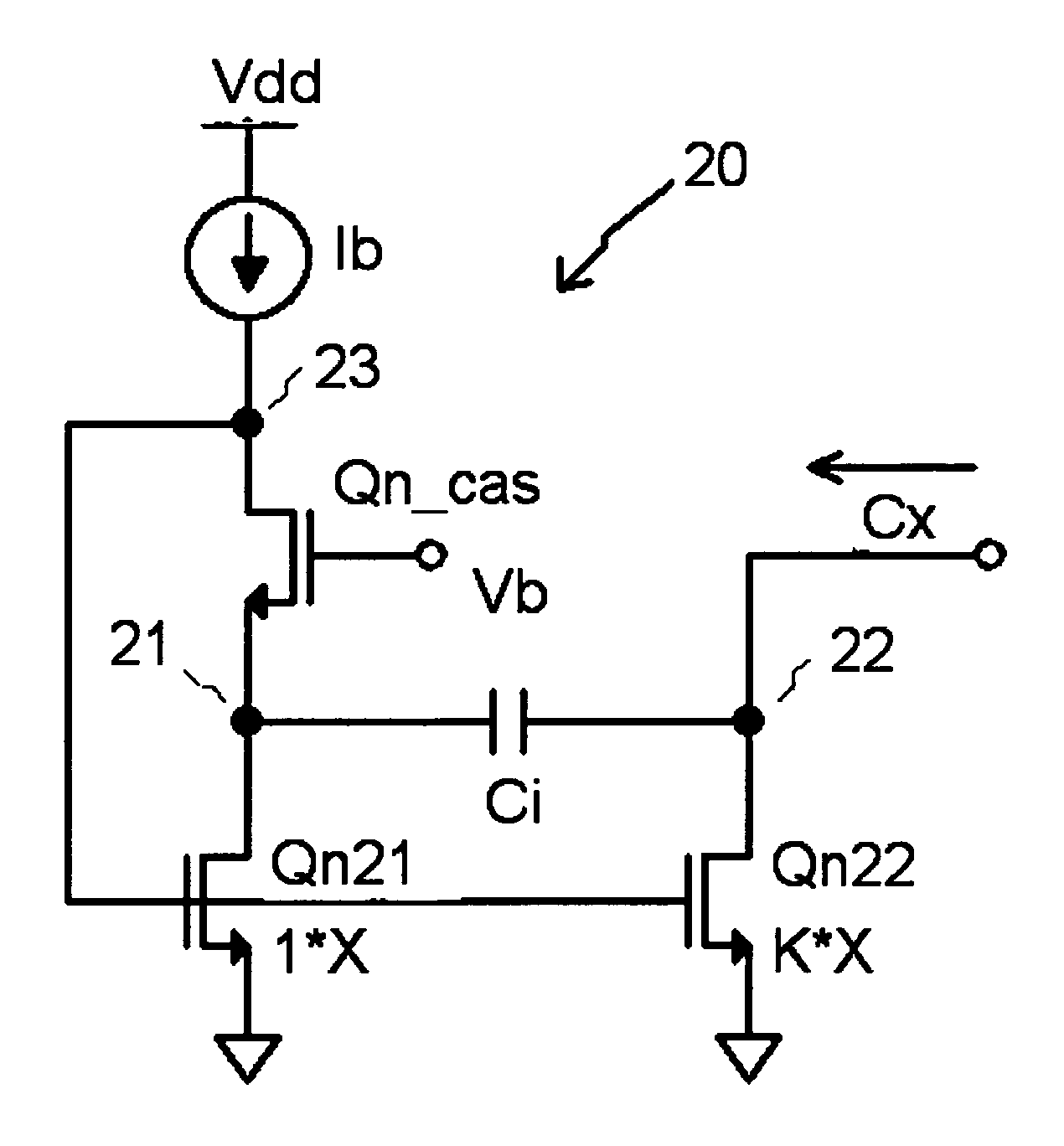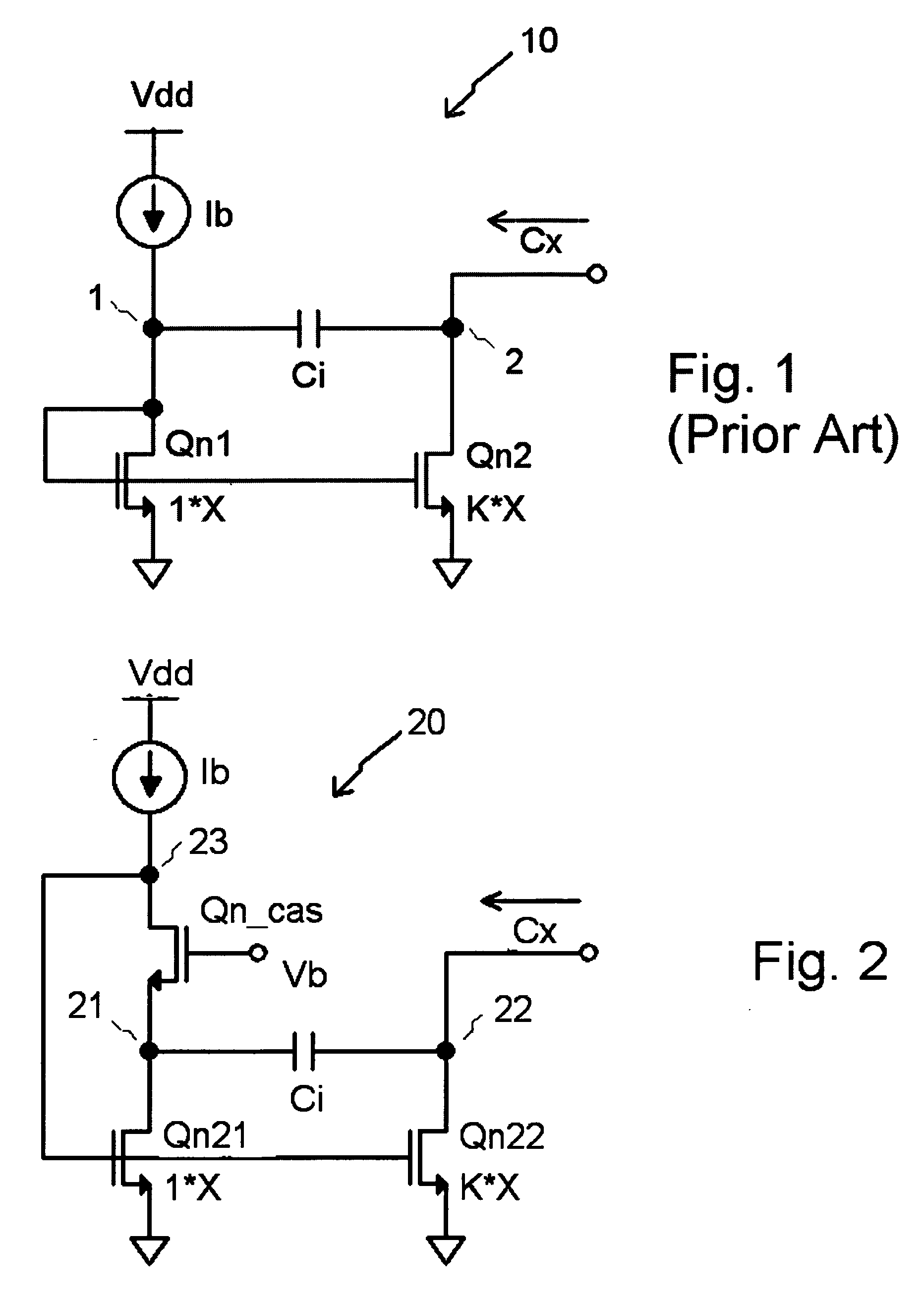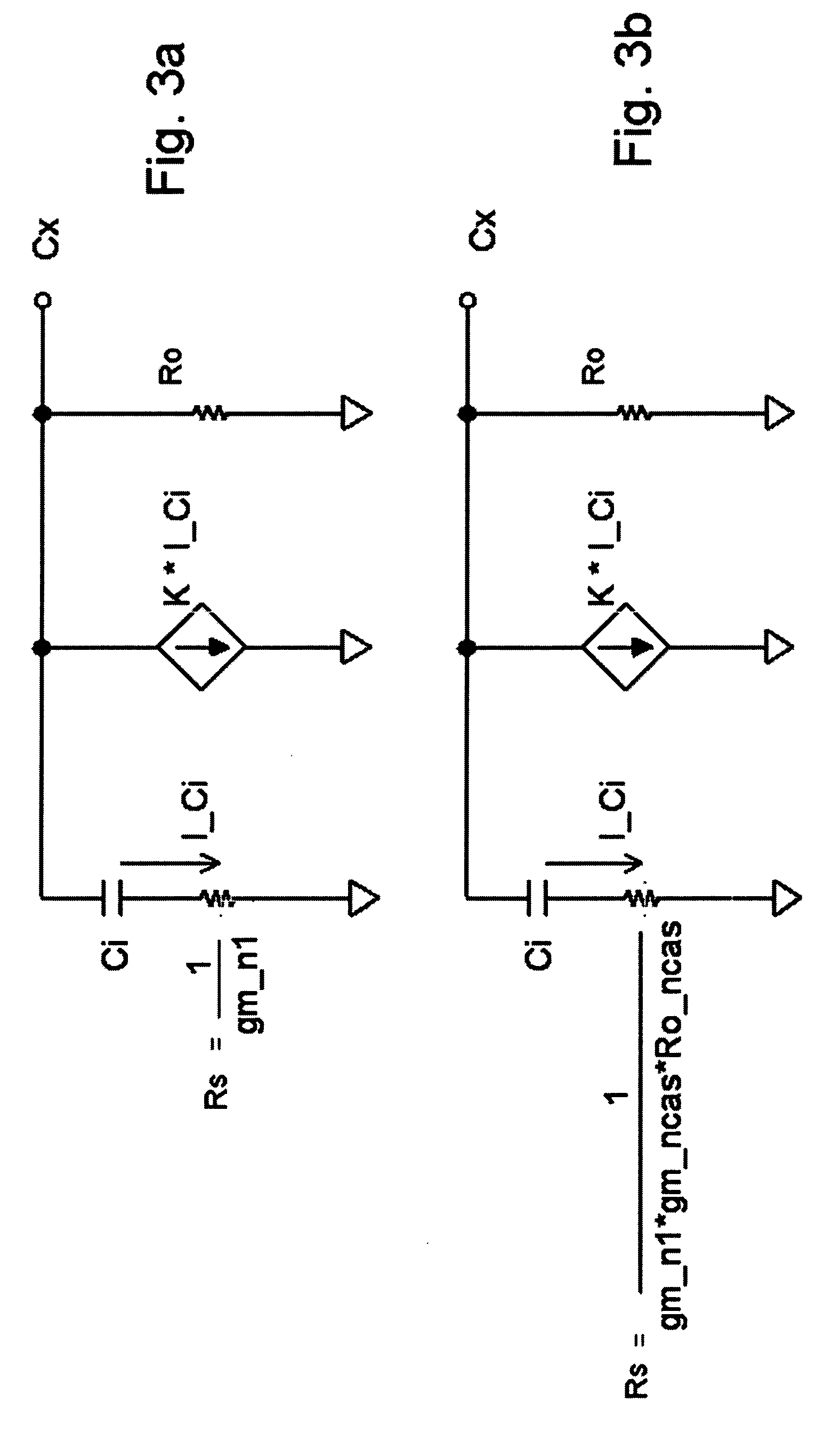Capacitance multiplier circuit exhibiting improved bandwidth
a multiplier circuit and capacitor technology, applied in the direction of pulse technique, process and machine control, instruments, etc., can solve the problems of reduced convenience at the application level, increased pin-out cost, and substantial die area incurred in the construction of these capacitors, so as to reduce the series resistance of the current sensing path, increase bandwidth, and reduce the effect of cos
- Summary
- Abstract
- Description
- Claims
- Application Information
AI Technical Summary
Benefits of technology
Problems solved by technology
Method used
Image
Examples
Embodiment Construction
[0017] Referring first to FIG. 1, there is shown a prior art capacitance multiplier circuit 10. This circuit is biased by current source Ib. The direct current from source Ib flows through a diode-connected transistor Qn1, thereby establishing an operating voltage at node 1. The drain terminal of transistor Qn2 is biased such that Qn2 operates in the pinch-off region. The factor K represents the size ratio of Qn2 to Qn1. K is usually assumed to be a positive number greater than unity.
[0018] With these operating conditions established on devices Qn1 and Qn2, the small signal model shown in FIG. 3a can be applied to evaluate the bandwidth performance of the circuit 10. It should be noted that I_Ci represents the current in capacitor Ci.
[0019] Referring now to FIG. 2, there is shown a detailed schematic diagram of a capacitance multiplier circuit 20 in accordance with the present invention. This circuit is biased by a current source Ib. The direct current from source Ib flows through...
PUM
 Login to View More
Login to View More Abstract
Description
Claims
Application Information
 Login to View More
Login to View More - R&D
- Intellectual Property
- Life Sciences
- Materials
- Tech Scout
- Unparalleled Data Quality
- Higher Quality Content
- 60% Fewer Hallucinations
Browse by: Latest US Patents, China's latest patents, Technical Efficacy Thesaurus, Application Domain, Technology Topic, Popular Technical Reports.
© 2025 PatSnap. All rights reserved.Legal|Privacy policy|Modern Slavery Act Transparency Statement|Sitemap|About US| Contact US: help@patsnap.com



